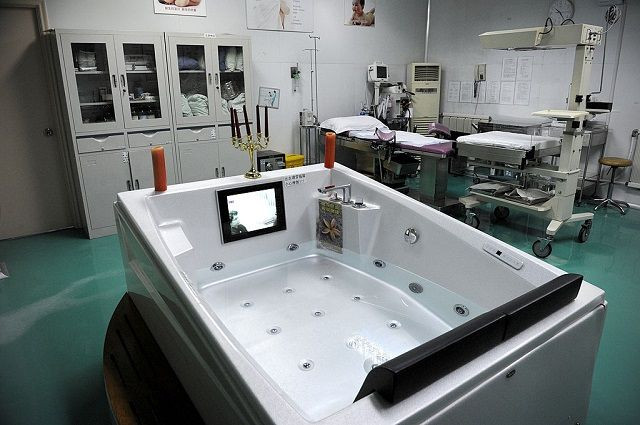Natural Childbirth: Water Birth Benefits And Risks; What Experts Advise

Delivering a child while immersed in water isn’t necessarily dangerous, but moms-to-be should still stick to land, say a group of experts.
Earlier this week, the American College of Obstetricians and Gynecologists released their updated guidelines on the growing practice of so-called water births. After reviewing the available evidence, ACOG’s specially appointed committee concluded that water immersion during early labor could have some practical benefits — shortening labor, reducing the need for spinal or epidural anesthesia, and providing some added comfort to the mother, among others. But for the second half of labor and delivery, they found there wasn’t enough proof to conclude the same for either mother or newborn.
“[I]t is important to differentiate between laboring in water and delivering in water,” said Dr. Joseph R. Wax, chair of ACOG’s Committee on Obstetric Practice that developed the guidelines, in a statement. “There is no evidence to support delivering a baby in water has benefits to the baby.”
Meanwhile, there might be slight but very real dangers that come with water delivery, the committee noted. These include an increased risk of infections in mother and child, damage to the umbilical cord, and asphyxiation or seizures in newborns. Without more research to address these concerns, they concluded, mothers should deliver their children on solid ground. And those who choose to deliver in water should be made aware of these potential risks and the lack of evidence for its benefits during delivery, they added.
The organization's recommendations are somewhat less friendly toward water births than those handed out by similar organizations elsewhere. In the United Kingdom, for instance, the Royal College of Obstetricians and Gynecologists has given their blessing to healthy women with no pregnancy complications to both labor and deliver in water, as has the American College of Nurse–Midwives. While there is no exact tally in the U.S., since water births aren’t recorded on birth certificates, the practice does appear to be growing and is more common among women who choose to give birth at home or with the help of a midwife. Research cited by the committee found that 1.5 percent of UK hospital births involved water annually, while rates of over 50 percent have been seen in specialized birth centers run by midwives.
As it’s unlikely that ACOG’s recommendations will burst the water birth trend anytime soon, they also provide guidelines for the increasing number of facilities that choose to offer immersion. These include drafting stringent criteria for selected mothers, maintaining and rigorously cleaning birthing pools and tubs, procedures to prevent contamination, and especially close monitoring of women during delivery.
Source: Committee on Obstetric Practice. Immersion in Water During Labor and Delivery. American College of Obstetricians and Gynecologists. 2016.



























